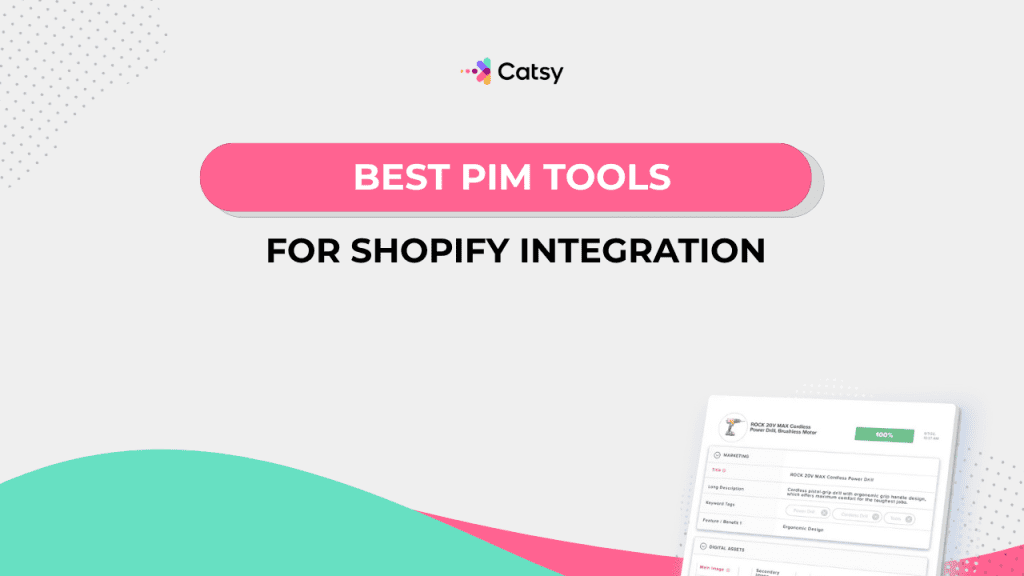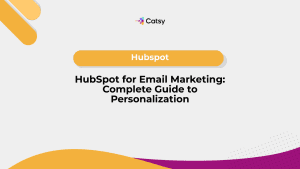The Best PIM Tools for Shopify Integration
Chart Your Navigation Route
- Essential PIM Tools for Charting Shopify Success
- Core Navigation Features That Make the Difference
- Advanced Tools for Complex Shopify Operations
- Real-World Success Stories & Implementation Guidance

What You Will Learn
- Essential PIM tools that transform Shopify product management
- Core features that enable seamless integration and automation
- Advanced capabilities for complex catalogs and multi-channel operations
- Real-world results from brands using these powerful navigation tools
In this Article
1. Essential PIM Tools for Charting Shopify Success
In order to navigate the complex waters of Shopify product management, you need the right tools. The best Shopify PIM (product information management) tools for Shopify integration are more than just software features – they’re navigational instruments.
In the same way that a skilled captain relies on multiple navigational tools working in harmony, successful Shopify merchants need integrated PIM capabilities.
A. The Foundation: Core Integration Tools
The cornerstone of effective Shopify PIM integration is a robust API connection; it must speak Shopify’s native language fluently. This eliminates the need for complex middleware or workarounds.
A direct connection ensures real-time data sync, reduces points of failure, and provides you with transparency over how your product information flows from central management to customer-facing storefronts.
Metafield Mapping and Management Tool
Shopify’s metafields offer powerful customization, but manual management is overwhelming when you scale. Professional mapping tools transform the process into an automated operation.
These tools allow you to configure your metafield structures once, then automatically populate the appropriate product information based on intelligent rules and templates. Tech specs, compliance data, and SEO-optimized descriptions are now populated to the right locations.
Template-Driven Content Creation System
Consistency across large product catalogs requires systematic approaches to content creation. Template systems enable standardized product information while allowing customization for specific requirements.
These templates ensure brand voice consistency, SEO optimization, and complete product information without requiring manual attention for each individual product. New team members can create professional content that matches established standards immediately.
Make Catsy DAM and PIM Software an Extension of Your Team
Book a Free DemoB. Quality Assurance and Validation Tools
As your product catalog grows, quality control becomes more critical. Automated validation tools prevent incomplete or errant information from reaching your customers.
Automated systems check for missing fields, validate data formats, and flag potential inconsistencies before your content is published to Shopify.
Content Completeness Reporting
Comprehensive reporting tools are your friends. They provide visibility into the content quality of your entire catalog. Reports from your systems can identify missing info, outdated content, and opportunities to optimize.
Dashboard views help your teams prioritize efforts by highlighting products that are ready for SEO optimization, image updates, or overall completeness.
Workflow and Approval Management
Professional operations require systematic review processes that ensure quality while maintaining operational efficiency. Workflow tools coordinate content creation, review, and approval across team members with different expertise areas.
These systems route content to appropriate reviewers based on product type and content category while tracking progress and maintaining audit trails for accountability and process improvement.
2. Core Navigation Features That Make the Difference
A. Digital Asset Management Tools: Your Visual Command Center
Centralized Media Library System
Professional DAM tools provide you with the organization you need to manage your visual assets. Whether you’re providing images, videos, or technical drawings, your data is systematically organized within your DAM system.
Advanced search capabilities help teams quickly locate specific assets as your libraries grow to include thousands of files. Version control ensures current visuals appear across all channels while maintaining historical access for reference.
Automated Image Processing Engine
Your teams are spending a lot of time editing images. Thankfully, automated processes can handle this! Resizing, optimization, and format conversion can be processed based on Shopify’s technical requirements.
Your tools generate multiple image sizes automatically, optimize file compression for fast loading, and ensure consistent visual presentation across all device types and screen sizes.
Asset-Product Relationship Mapping
Sophisticated mapping tools will connect your images, videos, and rich documents with the appropriate products – even variants! This association ensures that the right visuals appear with the right products… automatically.
Lifestyle photography, technical diagrams, installation videos, and specification sheets connect logically with related products without manual coordination for each asset assignment.
Brand Consistency and Style Guide Enforcement
Your customers trust brand consistency. Your tools help maintain this consistent presentation across all of your product imagery. Style guide enforcement makes sure that each of your photographs has similar lighting, background, angles, and composition.
Automated checking will identify images that don’t meet your brand’s standards, all while providing guidance for improvement.
B. SEO and Content Optimization Tools
Template-Driven SEO Optimization
Systematic SEO tools will generate content for you based on product attributes, target keywords, and proven optimization strategies. Your templates will ensure consistent optimization across each of your channels.
Automated title generation, meta description creation, and alt text assignment are a few examples of tasks that will no longer be done manually. This saves your team time, saves you payroll hours, and helps ensure accuracy and scalability.
Structured Data and Schema Markup Tools
Your PIM’s advanced SEO implementation tools can handle markup, rich snippets, and technical SEO coordination seamlessly. Products will be matched with the appropriate structured data; this improves your search visibility and click-through rates.
Multi-Channel SEO Adaptation
Different sales channels have different SEO requirements and keyword strategies. Advanced tools within your PIM will customize your content optimization for Google Shopping, Amazon listings, and business-to-business platforms.
Channel-specific optimization ensures maximum performance across all platforms without requiring separate optimization efforts for each destination. You enter the data into a centralized location, then it is pushed to your channels.
Performance Monitoring and Optimization Suggestions
Integrated analytics tools track your SEO performance across platforms and products. Meanwhile, these tools also identify opportunities for further optimization. These data-driven recommendations help improve your search visibility.
C. Localization and International Tools
Multi-Language Content Management System
If you operate on a global scale, you need sophisticated translation and localization tools… much more than just simple language translation! Professional localization systems coordinate translated content to your regional channels in a culturally appropriate way.
These tools integrate with professional translation services while providing workflow management for review, approval, and publication of localized content across multiple international markets.
Regional Compliance and Certification Tracking
Different markets have different requirements that you must adhere to. Certifications, safety standards, and regulatory compliance documentation are a few examples of information you’ll need to furnish, and accurately.
Compliance tracking tools with automated updates ensure that the appropriate certifications and regulatory information appears for each target market while tracking renewal dates and compliance requirements.
Currency and Pricing Localization Tools
International pricing can be tricky! Currency conversion, regional pricing strategies, and market-specific positioning are factors to consider. Sophisticated tools can adapt pricing presentation while maintaining your profit margins.
Regional pricing rules accommodate local market conditions and competitive landscapes while helping you maintain your operational efficiency through central management.
Cultural Adaptation and Regional Customization
International success requires much more than simple translation. You’ll need cultural adaptation tools that can modify your presentations to suit regional preferences and expectations. These tools enable systematic customization across your platforms.
Regional customization may include measurement system conversion, may feature emphasis adaptation, and may include presentation style modifications that resonate with local customer priorities and shopping behaviors.
3. Advanced Tools for Complex Shopify Operations
A. Multi-Store and Channel Management Tools
Cross-Store Content Synchronization
If your brand operates multiple Shopify storefronts, you need tools that coordinate your content across each. These synchronization tools allow for store-specific customization while still maintaining your consistency. For instance, B2B stores receive different content emphasis than consumer stores automatically.
Channel-Specific Content Adaptation Tools
Multi-channel operations require tools that can adapt your content to each platform’s requirement… and your consumers’ expectations. Amazon listings, for example, need different optimization than Google Shopping feeds.
These adaptation tools customize content automatically based on the destination channel while maintaining centralized content creation and approval processes.
Inventory Coordination Across Channels
Complex multi-channel operations require tools that can coordinate your inventory across each of the platforms you use. Real-time sync of your inventory means that accurate availability info reaches your customers, no matter where they shop.
Advanced allocation tools help optimize inventory positioning across channels while maintaining service levels and operational efficiency.
B. Advanced Automation and Workflow Tools
Automation tools will generate content based on your product attributes, category classifications, and business rules. These systems will save you time and money by reducing manual content creation and avoiding errors.
Conditional content inclusion ensures relevant information appears for appropriate product types while automating routine content elements that don’t require a human’s creative input.
Batch Operation and Bulk Update Tools
If you have a large number of SKUs, you need powerful batch operations. These tools can handle hundreds or thousands of products simultaneously, enabling for catalog updates, seasonal changes, and promotional content.
Bulk operations maintain accuracy through validation checking while dramatically reducing payroll time requirements for large-scale content management.
Automated Quality Assurance Reporting
Advanced reporting tools will continuously monitor your content’s quality across entire catalogs, and will identify opportunities and potential issues with your content. This allows you to make changes proactively, not reactively.
Automated alerts will notify your team members of products that require attention. Compliance updates and optimization opportunities are two examples.
C. Integration and Connectivity Tools
ERP and Business System Integration
Enterprise operations should have tools to connect PIM systems with legacy ERP, CRM, and other inventory management systems. These integrations ensure data consistency across all business systems.
Real-time data synchronization keeps all of your systems coordinated while enabling seamless workflows that span multiple business applications and departments.
API Management and Custom Integration Tools
Complex business requirements often need custom integrations with unique workflows. Robust API tools enable precisely this, while still maintaining system stability and performance.
Professional API management ensures a reliable data exchange with external systems while providing monitoring and error handling capabilities that will maintain operational reliability.
Third-Party Service Integration
Modern businesses often require multiple specialized services for translation, image process, or analytics, for example. Integration tools coordinate these services while maintaining centralized control!
These integrations enable best-of-breed solutions for specific requirements while maintaining unified operations through central PIM coordination.
4. Real-World Success Stories & Implementation Guidance
A. Transformation Through Integrated Tool Usage
Operational Efficiency Revolution
A growing fashion retailer implemented comprehensive PIM tools. They achieved a 75 percent reduction in their product launch time as a result. Template-driven content creation, automated image processing, and systematic quality control contributed to the transformation from chaos to consistency.
The integrated tool approach enabled the company to launch seasonal collections with existing staff while improving content quality and reducing errors that had previously required extensive correction efforts.
SEO Performance Breakthrough
An outdoor equipment brand leveraged advanced SEO tools to optimize their entire product catalog. Template-driven optimization and the implementation of automated structured data resulted in a 35 percent increase in organic search traffic… within four months!
Consistent optimization across product families created compound SEO benefits. Individual product improvements strengthened overall domain authority and search performance.
Multi-Channel Expansion Success
After they implemented comprehensive channel management tools, an electronics distributor was able to successfully launch on Amazon, Google Shopping, and specialized business-to-business platforms. There were no proportional increases in operational overhead.
Channel-specific content adaptation tools enabled professional presentation across diverse platforms without adding manual tasks and while reducing error.
International Growth Acceleration
A wellness brand used integrated localization tools to enter European markets. Tools to support multi-language content management, compliance tracking, and cultural adaptation enabled this rapid expansion.
The systematic approach reduced international launch timelines by 60 percent compared to previous manual localization processes while improving customer experience through appropriate regional customization.
B. Strategic Tool Selection and Implementation
Assessment-Based Tool Configuration
Successful implementation of a PIM tool begins with a thorough assessment of your current challenges. Your team’s capabilities and your strategic objectives are further considerations. This close analysis allows you to choose the right tool and the correct configuration to ensure maximum impact.
Understanding your specific business requirements helps you prioritize which tools will deliver the most immediate bang for your buck while establishing foundations for long-term growth.
Phased Implementation Approach
Rather than implementing all of your tools simultaneously, consider implementing them using a phased approach. That way, your teams can learn and adapt gradually. Integrate your core tools first, then follow that with advanced automation and optimization.
In this way, you enable validation of the efficacy of your tools before you add complexity through advanced features.
Team Training and Adoption Strategy
The efficacy of your tools depends heavily upon your team’s willingness to adopt them. Comprehensive training programs ensure that your team members are on board with leveraging tools effectively.
Ongoing education helps teams discover advanced features and optimization techniques that deliver additional value as business requirements evolve and expand. Create style sheets and other guidance to assist future teams.
C. Measuring Tool Effectiveness and ROI
Operational Efficiency Metrics
KPIs for PIM tools include time reduction for launches, error rate improvements, and increases in productivity. These metrics demonstrate tangible benefits and ROI.
Successful implementations typically show 60-80 percent reductions in manual effort for routine content management tasks. Meanwhile, you’ll see improved quality and consistency across all your customer touchpoints.
Revenue Impact Measurement
Advanced tools often deliver measurable revenue impact. This is through SEO performance, a better customer experience, and success in channel expansion. Tracking these metrics helps you justify the investment, but also helps guide your optimization efforts.
Better product information quality typically results in improved conversion rates, reduced return rates, and increased average order values due to confident customer purchasing decisions.
Scalability and Growth Enablement
Tool efficacy is ultimately measured in strategic growth opportunities that are no longer limited by operational constraints. International expansion, channel diversification, and product line expansions are now manageable, not overwhelming.
Long-term success metrics include successful market expansion, channel performance improvements, and sustainable operational scaling without proportional resource increases.
Key Takeaways
- The best PIM tools for Shopify integration combine direct API connectivity, automated content management, and sophisticated workflow coordination to transform complex operations into systematic processes.
- Essential tools include metafield management, digital asset organization, SEO optimization, and quality assurance capabilities that work together as an integrated navigation system.
- Advanced tools for multi-channel operations, international expansion, and enterprise-scale workflows enable strategic growth opportunities while maintaining operational efficiency.
- Successful tool implementation requires strategic selection based on specific business requirements, phased deployment approaches, and comprehensive team training for maximum adoption and effectiveness.
- The right combination of PIM tools charts a clear course toward operational excellence, enabling Shopify merchants to navigate complex challenges while achieving sustainable growth and competitive advantages.
Want more tips, tutorials, and insights on product content and e-commerce operations?
Stay connected. We post regularly to help brands like yours scale smarter.
Are You Ready To streamline your product content management?

Frequently Asked Questions
The most critical tools include direct API integration for seamless connectivity, metafield mapping for structured data management, template-driven content creation for consistency, and automated validation for quality control. These core tools provide the foundation for all other PIM capabilities.
Advanced SEO tools provide template-driven optimization, automated structured data implementation, and systematic keyword integration across entire catalogs. These tools ensure consistent optimization while adapting content for different channels and search strategies.
Essential DAM tools include centralized media libraries, automated image processing, asset-product relationship mapping, and version control systems. These tools ensure professional visual presentation while reducing manual effort and maintaining brand consistency.
Localization tools provide multi-language content management, regional compliance tracking, currency adaptation, and cultural customization capabilities. These tools enable systematic international expansion while maintaining operational efficiency and quality.
Key workflow tools include task assignment and routing, approval process management, progress tracking, and automated notification systems. These tools ensure efficient collaboration while maintaining quality control and accountability.
Integration tools provide ERP connectivity, API management, and third-party service coordination that ensure data consistency across all business systems. These tools enable unified operations while maintaining specialized capabilities for specific requirements.
Critical automation tools include rule-based content generation, batch operation capabilities, automated quality checking, and systematic content distribution. These tools eliminate repetitive tasks while ensuring consistency and accuracy.
Multi-channel tools provide content adaptation, channel-specific optimization, and automated feed generation that enable professional presentation across diverse sales platforms while maintaining centralized management and operational efficiency.
Essential reporting tools include content completeness dashboards, performance analytics, quality assurance monitoring, and ROI tracking capabilities. These tools provide visibility into system effectiveness and optimization opportunities.
Enterprise tools include sophisticated workflow management, advanced integration capabilities, comprehensive compliance tracking, and scalable automation systems that support complex operations while maintaining efficiency and quality at scale.
Subscribe For More Content
Sign up for monthly tips on how to drive revenue with product content.




